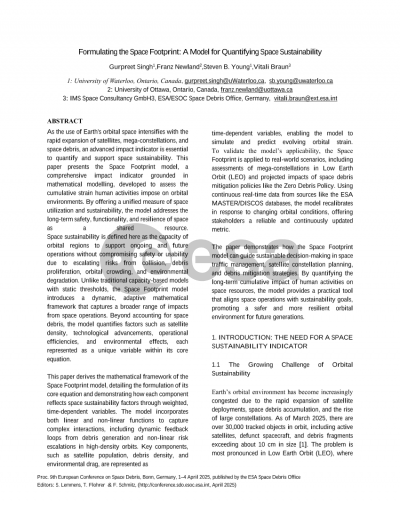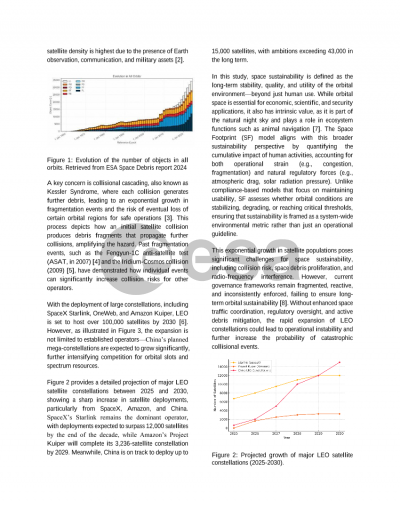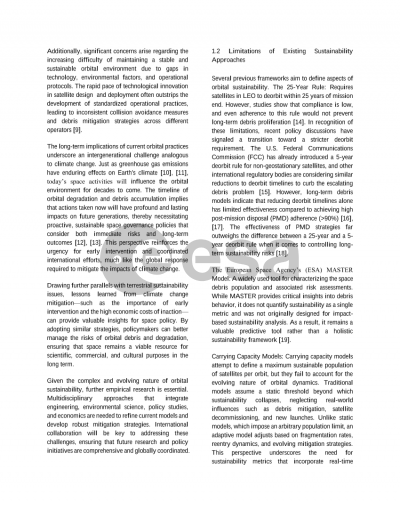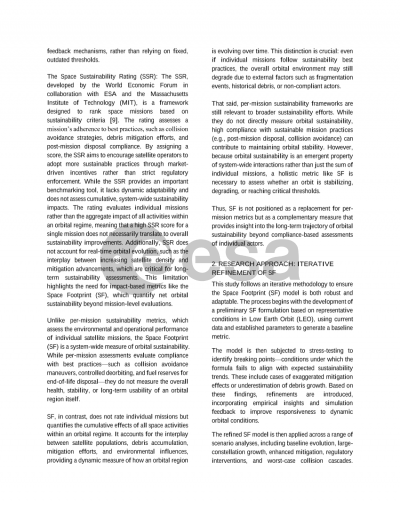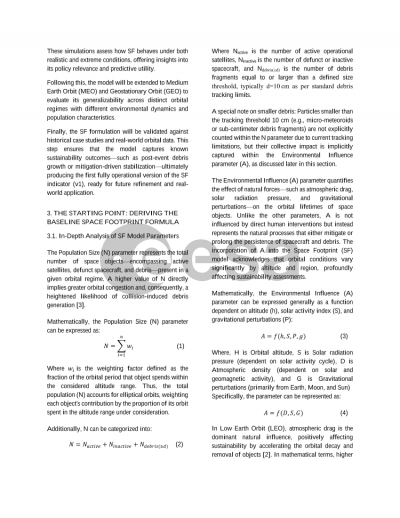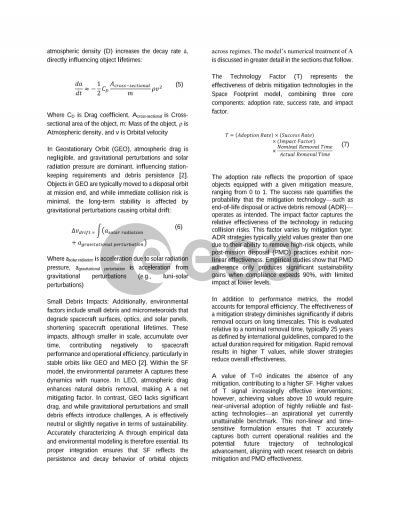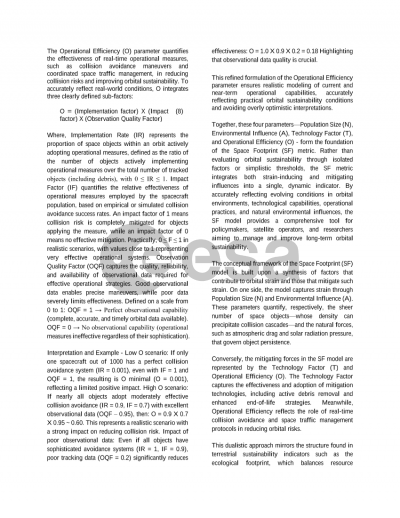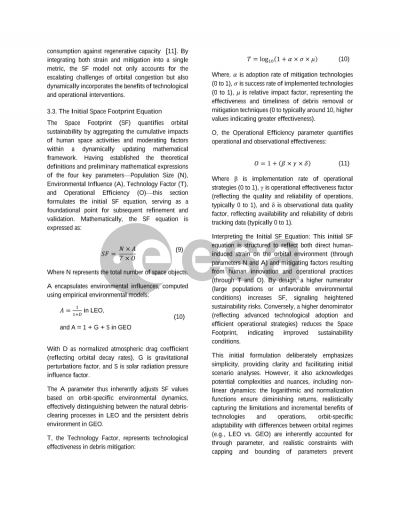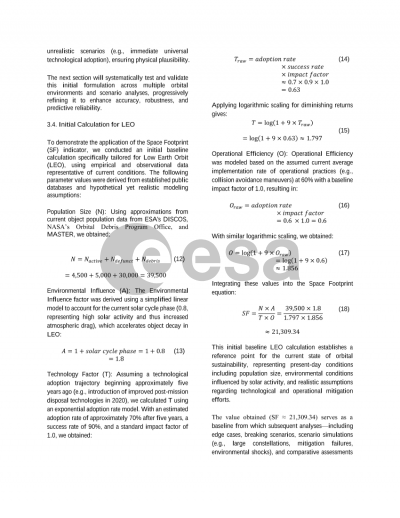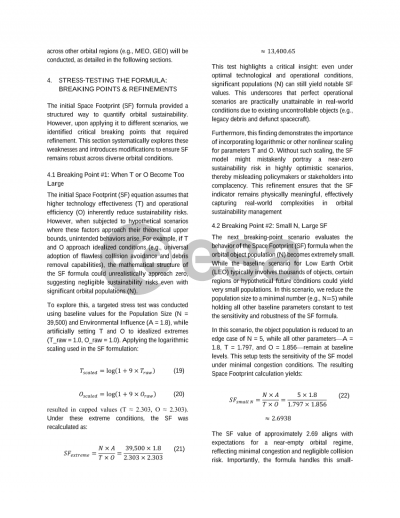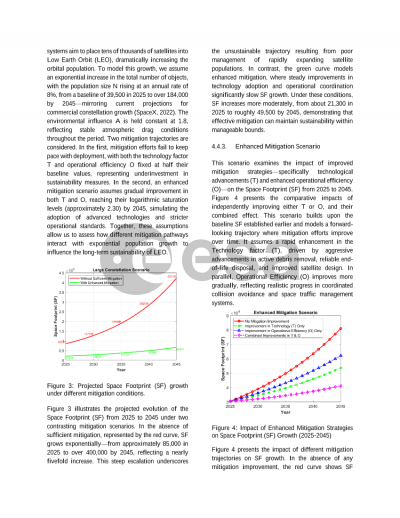Document details

Abstract
As the use of Earth's orbital space intensifies with the rapid expansion of satellites, mega-constellations, and space debris, an advanced impact indicator is essential to quantify and support space sustainability. This paper presents the Space Footprint model, a comprehensive impact indicator grounded in mathematical modelling, developed to assess the cumulative strain human activities impose on orbital environments. By offering a unified measure of space utilization and sustainability, the model addresses the long-term safety, functionality, and resilience of space as a shared resource.
Space sustainability is defined here as the capacity of orbital regions to support ongoing and future operations without compromising safety or usability due to escalating risks from collision, debris proliferation, orbital crowding, and environmental degradation. Unlike traditional capacity-based models with static thresholds, the Space Footprint model introduces a dynamic, adaptive mathematical framework that captures a broader range of impacts from space operations. Beyond accounting for space debris, the model quantifies factors such as satellite density, technological advancements, operational efficiencies, and environmental effects, each represented as a unique variable within its core equation.
This paper derives the mathematical framework of the Space Footprint model, detailing the formulation of its core equation and demonstrating how each component reflects space sustainability factors through weighted, time-dependent variables. The model incorporates both linear and non-linear functions to capture complex interactions, including dynamic feedback loops from debris generation and non-linear risk escalations in high-density orbits. Key components, such as satellite population, debris density, and environmental drag, are represented as time-dependent variables, enabling the model to simulate and predict evolving orbital strain.
To validate the model’s applicability, the Space Footprint is applied to real-world scenarios, including assessments of mega-constellations in Low Earth Orbit (LEO) and projected impacts of space debris mitigation policies like the Zero Debris Policy. Using continuous real-time data from sources like the ESA MASTER/DISCOS databases, the model recalibrates in response to changing orbital conditions, offering stakeholders a reliable and continuously updated metric.
The paper demonstrates how the Space Footprint model can guide sustainable decision-making in space traffic management, satellite constellation planning, and debris mitigation strategies. By quantifying the long-term cumulative impact of human activities on space resources, the model provides a practical tool that aligns space operations with sustainability goals, promoting a safer and more resilient orbital environment for future generations.
Preview
